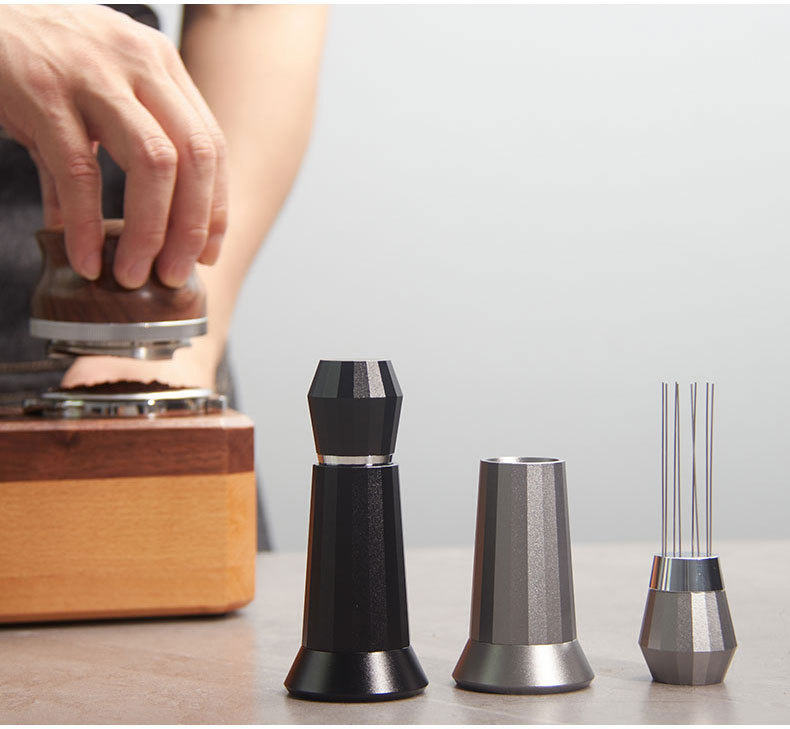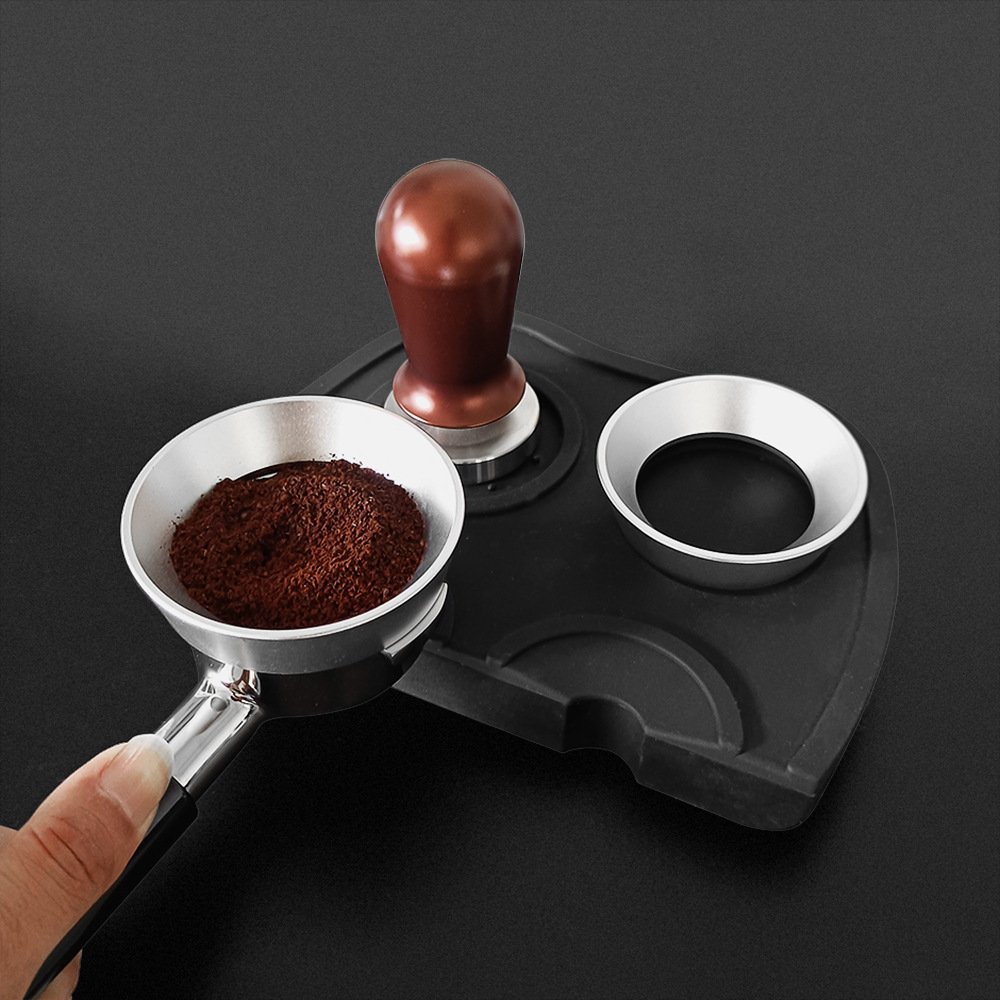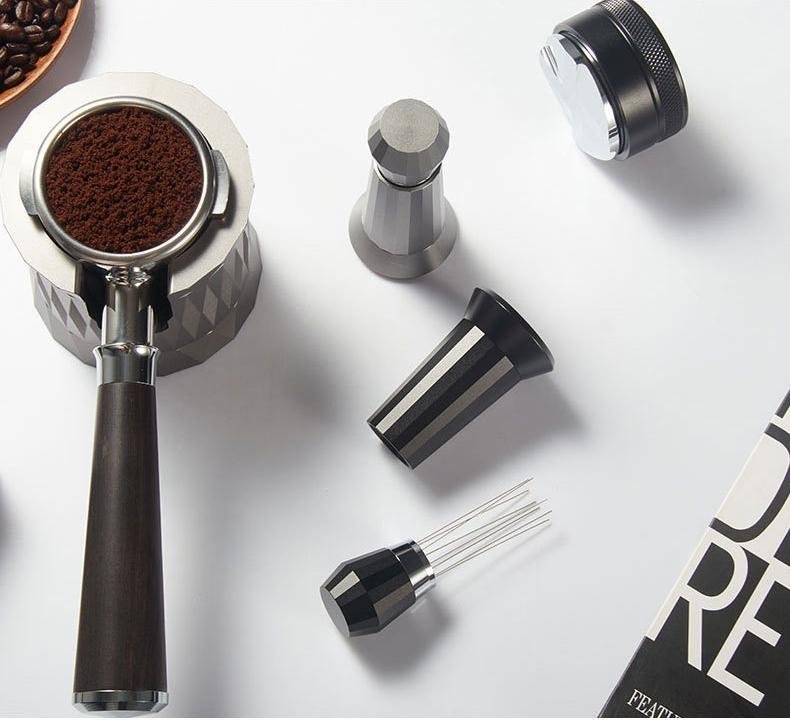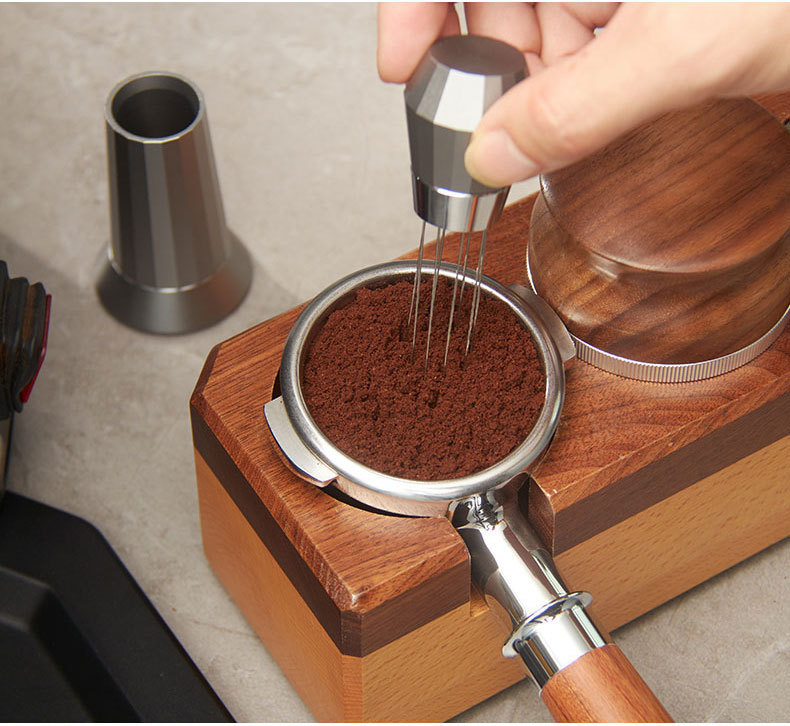The Ultimate Guide to Coffee Distribution Tools: Which One Makes the Biggest Difference?
You've experienced those frustrating uneven espresso extractions where coffee channels through the puck. Poor distribution is likely the culprit, leaving you with sour, bitter shots that waste premium beans.
A coffee distribution tool helps achieve even extraction by uniformly spreading grounds in your portafilter before tamping. The most effective tools are WDT whisks and levelers, which minimize channeling by eliminating clumps and creating a level bed for water to flow through evenly.

When I first started making espresso at home, I was shocked at how inconsistent my shots were despite using the same beans and settings. My breakthrough came when I discovered distribution tools[^1]. Let me walk you through the options and help you understand which can make the biggest difference in your coffee routine.
Is the WDT Tool Worth it?
Many coffee enthusiasts hesitate to spend money on a simple wire tool. The cost seems high for what appears to be a few needles in a holder. I felt the same skepticism initially.
The WDT (Weiss Distribution Technique)[^2] tool is absolutely worth the investment as it's the most effective way to break up clumps and evenly distribute coffee grounds. Using thin needles (0.3-0.4mm) to stir the grounds eliminates density variations that cause channeling during extraction, resulting in noticeably more balanced, flavorful espresso shots[^3].

Deep Dive into WDT Tools and Techniques
WDT tools vary significantly in design and effectiveness. After trying numerous versions, I've found that needle gauge makes a substantial difference. Based on extensive testing and community feedback, here's what makes WDT tools effective:
| Feature | Optimal Specification | Why It Matters |
|---|---|---|
| Needle Gauge | 0.3-0.4mm | Thinner needles move between grounds without creating new clumps |
| Needle Count | 3-7 needles | Enough to be efficient without overcrowding |
| Handle Design | Ergonomic, weighted | Provides control and stability during use |
| Material | Food-grade stainless steel | Ensures durability and safety |
The proper WDT technique involves gentle, methodical movements. Start from the center and work outward in a circular pattern, focusing on breaking up any visible clumps. The goal isn't to compact the coffee but to create a homogeneous distribution.
What surprised me was how the WDT tool improved even expensive grinders' output. Even my high-end grinder produced some clumps that affected extraction. The WDT tool essentially democratizes good extraction by compensating for grinder limitations.
One customer from my distribution told me he reduced his coffee waste by 30% after incorporating a quality WDT tool into his workflow - fewer bad shots meant fewer wasted beans.
What is the Difference Between WDT and Distribution?
When I first encountered these terms, I was confused about whether they referred to the same thing. Many baristas use the terms interchangeably, which adds to the confusion.
WDT specifically refers to using needles to stir and break up clumps in coffee grounds, while distribution is the broader process of evening out coffee grounds in the portafilter. Distribution tools (often called levelers) spin or twist across the coffee bed's surface to create an even surface, but unlike WDT, they don't address deeper clumping issues.

Understanding Distribution Methods: A Comprehensive Breakdown
The distinction between these methods becomes clearer when we examine their mechanics and outcomes. Through my manufacturing experience and feedback from professional baristas, I've compiled this detailed analysis:
WDT Method (Weiss Distribution Technique)
This technique uses fine needles to work through the entire coffee bed. The primary goal is homogeneity throughout the entire puck, not just the surface.
The physics behind WDT is fascinating - by breaking up clumps, you're creating a more uniform resistance to water flow during extraction. Water naturally follows the path of least resistance, so eliminating density variations prevents channeling where water rushes through less dense areas.
Distribution Tools (Levelers/Spinners)
These tools primarily address surface-level evenness. Common examples include:
- OCD-style distributors: These spin across the surface with adjustable depth.
- Palm distributors: Applied with downward pressure while rotating.
- Distribution rings: Guide grounds into an even bed through a specific shape.
While testing different manufacturing prototypes, I discovered that distribution tools compress the top layer of coffee. This "pre-tamping" effect can be beneficial but doesn't address internal clumping.
The most successful baristas I've worked with typically use both methods: WDT first to address internal homogeneity, followed by a distribution tool to perfect the surface. This combination produces the most consistent results across different coffee origins and roast levels.
Does a Coffee Distributor Make a Difference?
Before investing in distribution tools, I was skeptical about their impact. Many coffee enthusiasts wonder if these tools are just fancy accessories or genuine improvements.
Yes, coffee distributors make a significant difference in extraction quality and consistency. By creating an even coffee bed, distributors eliminate channeling issues that cause uneven extraction. This results in balanced flavors, improved shot-to-shot consistency, and fewer wasted beans, making them essential tools for serious home baristas and professionals alike.

Measurable Benefits of Coffee Distribution Tools
Through years of manufacturing distribution tools and gathering feedback, I've documented several quantifiable improvements these tools bring to espresso preparation:
Extraction Yield Improvements
When properly used, distribution tools can increase extraction yield consistency by 1-2%. This might seem small, but in espresso brewing, this difference is substantial. In blind taste tests with our wholesale clients, properly distributed coffee consistently scored higher for flavor clarity and sweetness.
Time Savings
Professional baristas using quality distribution tools report 15-25% faster workflow during busy service periods. The standardization these tools provide allows for more efficient movements and less fussing with uneven coffee beds.
| Distribution Method | Avg. Prep Time | Consistency Rating | Learning Curve |
|---|---|---|---|
| Finger Distribution | 25-35 seconds | Low | Medium |
| Tapping Technique | 15-25 seconds | Medium-Low | Medium |
| Distribution Tool | 10-15 seconds | High | Low |
| WDT Tool | 15-25 seconds | Very High | Low |
| WDT + Distributor | 25-35 seconds | Excellent | Medium |
The distribution tool market has evolved significantly over the past decade. The first-generation tools focused primarily on aesthetics, but modern tools are engineering-focused, with precise depth adjustment mechanisms and calibrated bases.
What many don't realize is that distribution tools also protect your tamper. By creating an even surface before tamping, you reduce uneven pressure on your tamper edge, extending its lifespan and maintaining its precision.
Choosing the Right Coffee Distribution Tool
After testing hundreds of prototypes in our manufacturing facility, I've come to understand what makes a truly excellent distribution tool.
The best coffee distribution tool depends on your specific needs and brewing setup. For most serious espresso enthusiasts, a combination of a quality WDT tool (0.3-0.4mm needles) for breaking clumps and a precisely machined leveler with adjustable depth will provide the most consistent results and greatest improvement in extraction quality.

Engineering Considerations for Distribution Tools
The effectiveness of distribution tools comes down to precision engineering and thoughtful design. Here are the critical factors we've identified through our manufacturing experience:
Material Selection
Premium distribution tools use food-grade stainless steel[^4] (304 or 316 grade) or anodized aluminum. These materials provide:
- Durability against daily use
- Chemical neutrality (won't react with coffee oils)
- Sufficient weight for stability during use
The weight distribution is particularly important - tools that are too light tend to skip across the coffee surface rather than smoothly distributing grounds.
Adjustment Mechanism
The depth adjustment system[^5] must be precise and repeatable. Our testing shows that each 0.1mm change in distribution depth can impact extraction time by 1-3 seconds. Quality tools feature:
- Micrometric adjustment rings
- Clear markings for repeatability
- Locking mechanisms to maintain settings
Ergonomics and Workflow Integration
A well-designed distribution tool becomes an extension of the barista's hand. The handle design, weight balance, and grip texture all contribute to consistent use. We've found that tools weighing between 350-500g provide the ideal balance of stability and maneuverability.
From working with commercial clients, I've learned that the best tools adapt to various workflows. Some cafes prefer quick distribution to maintain throughput, while specialty shops might prioritize perfect distribution regardless of time. The ideal tool accommodates both approaches through adjustability.
Conclusion
Distribution tools make a significant difference in espresso quality, with WDT tools addressing internal clumping and levelers creating even surfaces. Invest in both for the best results in your coffee journey.
---
[^1]: Discover the top distribution tools that can elevate your coffee routine and ensure consistent espresso shots.
[^2]: Explore this link to understand how the WDT can enhance your espresso shots and improve your coffee brewing technique.
[^3]: Learn expert tips and techniques to make perfect espresso shots every time, enhancing your coffee experience.
[^4]: Explore the advantages of food-grade stainless steel, especially in food-related applications, to understand its importance in distribution tools.
[^5]: Learn how precise depth adjustment systems can significantly influence coffee extraction times, enhancing your brewing experience.



